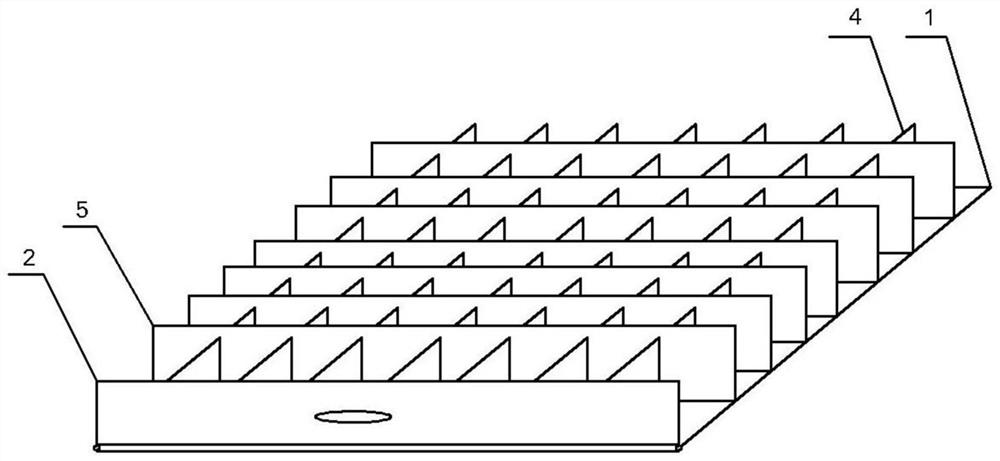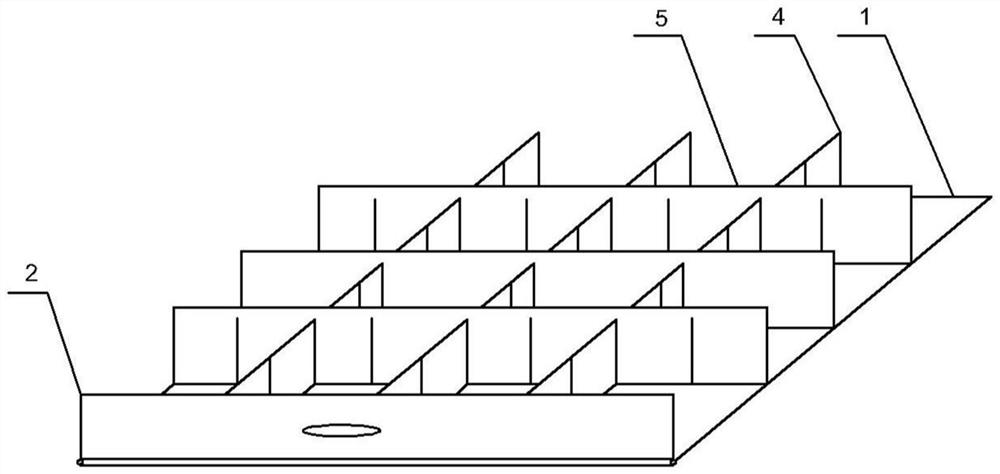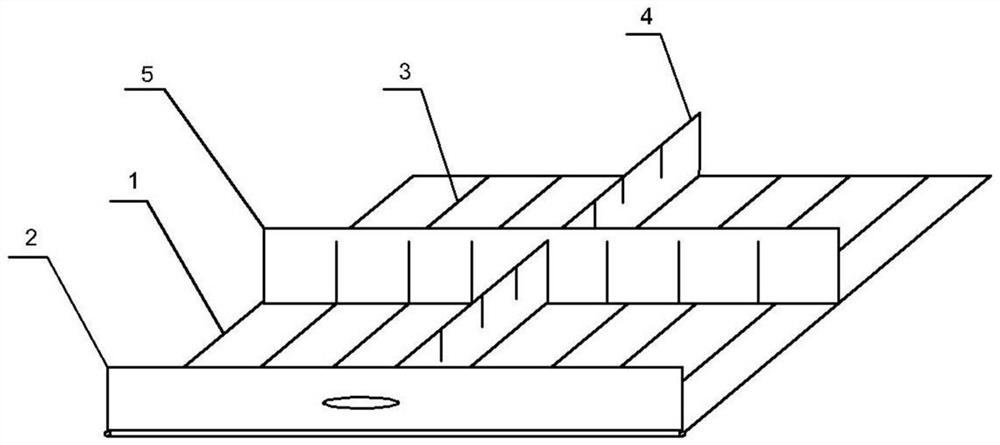Breeding methods for juvenile turtles
A breeding method and technology for juvenile turtles, applied in animal husbandry and other directions, can solve the problems of juvenile turtles being prone to malnutrition, prone to infection, and juvenile turtles biting each other, so as to inhibit the production of leeches, improve disease resistance, and attract insects. Good results
- Summary
- Abstract
- Description
- Claims
- Application Information
AI Technical Summary
Problems solved by technology
Method used
Image
Examples
Embodiment 1
[0029] A breeding method for juvenile turtles, comprising:
[0030] Step 1, such as Figure 1~3 As shown, a culture pond is set, the bottom of the culture pond is provided with a water outlet, the top is provided with a water inlet, and the bottom is provided with a silt layer with a thickness of 2 to 10 cm. The other side is provided with a plurality of feeding points, and a plurality of breeding cages are placed in the breeding pond. A waterproof motor is arranged on the top of the breeding cage, and the breeding cage includes a hollow box with one side open. Inside, there are multi-layer pullable cultivation units from top to bottom. The cultivation units include plate body 1 and door body 2 hinged to each other. The upper surface of the plate body 1 is provided with multiple parallel chute 3, any chute 3 is slidably provided with a clamping plate 4, and a plurality of inserting plates 5 perpendicular to it are clamped on the plurality of clamping plates 4, and any clampin...
PUM
 Login to View More
Login to View More Abstract
Description
Claims
Application Information
 Login to View More
Login to View More - R&D
- Intellectual Property
- Life Sciences
- Materials
- Tech Scout
- Unparalleled Data Quality
- Higher Quality Content
- 60% Fewer Hallucinations
Browse by: Latest US Patents, China's latest patents, Technical Efficacy Thesaurus, Application Domain, Technology Topic, Popular Technical Reports.
© 2025 PatSnap. All rights reserved.Legal|Privacy policy|Modern Slavery Act Transparency Statement|Sitemap|About US| Contact US: help@patsnap.com



